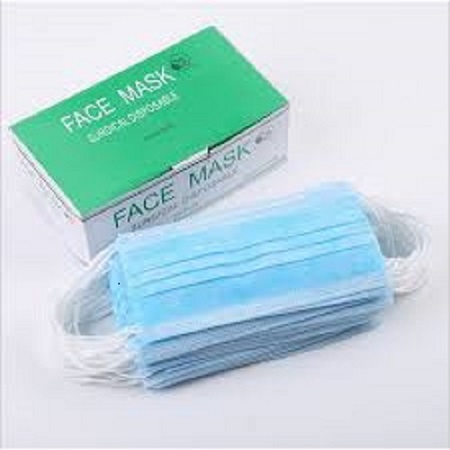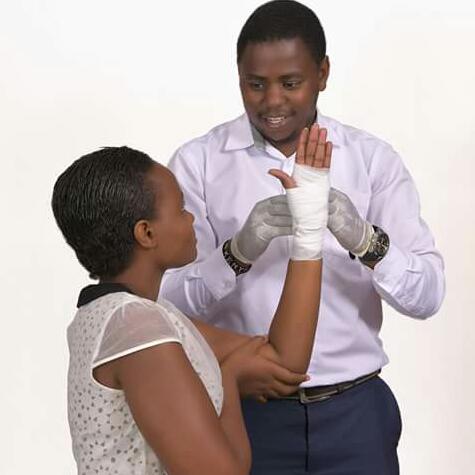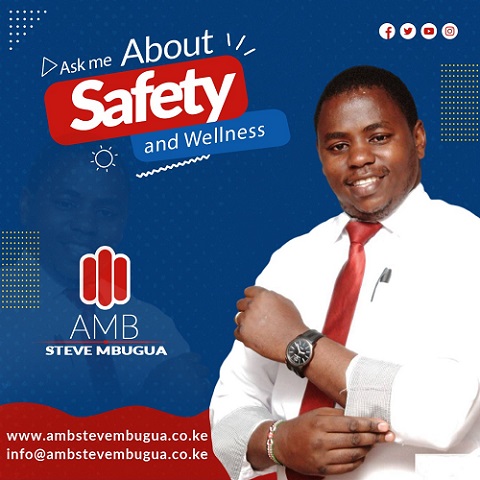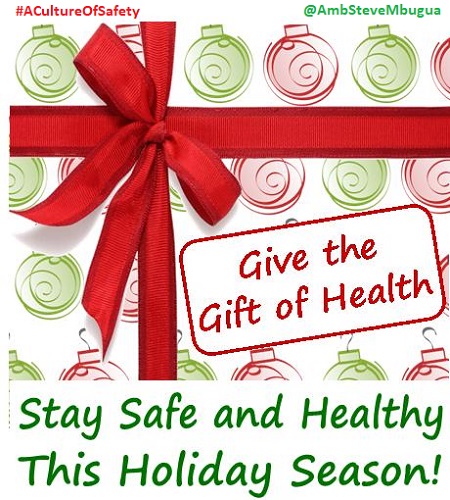As an Ambassador of Safety my mission is to help build a culture of safety at all places all the time. Advocating for safety practices and adopting a proactive approach to risk management are crucial elements in fostering a safe and efficient working environment. This document aims to provide comprehensive guidelines and examples to help organizations implement effective safety measures and manage risks proactively. By integrating safe work procedures and detailed safety practices, businesses can significantly reduce workplace incidents and enhance overall productivity.
Safe Work Procedures
Safe work procedures (SWPs) are step-by-step instructions that outline how to perform tasks safely and efficiently. They are designed to minimize the risk of injury and ensure compliance with safety regulations. Here are examples of safe work procedures:
1. Manual Handling
Manual handling involves lifting, carrying, and moving objects. Proper procedures are essential to prevent musculoskeletal injuries, such as strains, sprains, and back injuries.
• Key Points:
o Assess the Load: Before lifting, evaluate the weight, size, and shape of the object. If it’s too heavy or awkward, seek assistance or use mechanical aids.
o Plan the Lift: Identify a clear path and ensure there are no obstacles. Plan where you will place the load and how you will hold it.
o Correct Lifting Technique: Keep your feet shoulder-width apart, bend your knees, and keep your back straight. Lift with your legs, not your back.
o Hold the Load Close: Keep the load close to your body to reduce strain on your back.
o Avoid Twisting: Move your feet to turn, rather than twisting your back.
2. Chemical Handling
Handling chemicals safely is crucial to prevent exposure and contamination, which can lead to serious health issues and environmental damage.
• Key Points:
o Read Safety Data Sheets (SDS): Familiarize yourself with the properties, hazards, and safe handling procedures of each chemical.
o Proper Storage: Store chemicals in appropriate containers, labeled clearly, and segregate incompatible substances.
o Use of PPE: Wear appropriate personal protective equipment, such as gloves, goggles, and aprons, to protect against chemical exposure.
o Spill Response: Have a spill response plan in place, including spill kits and emergency contact numbers.
o Disposal: Dispose of chemicals according to local regulations and guidelines to prevent environmental contamination.
3. Electrical Safety
Working with electrical equipment requires strict adherence to safety protocols to prevent shocks, burns, and other injuries.
• Key Points:
o Lockout/Tagout (LOTO): Before performing maintenance, ensure that electrical equipment is properly de-energized and locked out to prevent accidental energization.
o Inspect Equipment: Regularly inspect electrical equipment for damage, frayed cords, and other hazards.
o Use of PPE: Wear appropriate PPE, such as insulated gloves and protective eyewear, when working with electricity.
o Avoid Water: Keep electrical equipment away from water and wet conditions to prevent electrocution.
o Training: Ensure all personnel are trained in electrical safety procedures and emergency response.
4. Machine Operation
Operating machinery safely is essential to prevent accidents and injuries related to mechanical equipment.
• Key Points:
o Pre-Operation Inspection: Check machinery for any defects or issues before use.
o Startup and Shutdown Procedures: Follow manufacturer guidelines for starting up and shutting down machinery.
o Use of Guards: Ensure all safety guards and protective devices are in place and functioning.
o Emergency Procedures: Know the location of emergency stop buttons and understand how to use them.
o Training: Only trained and authorized personnel should operate machinery.
5. Ladder Safety
Using ladders correctly is important to prevent falls, which can result in serious injuries.
• Key Points:
o Choosing the Right Ladder: Select a ladder that is appropriate for the task, in terms of height and weight capacity.
o Setting Up the Ladder: Place the ladder on a stable, level surface. Ensure it is fully extended and locked in place.
o Three Points of Contact: Maintain three points of contact (two hands and one foot or two feet and one hand) when climbing the ladder.
o Do Not Overreach: Keep your body centered on the ladder and do not lean to reach something.
o Inspection: Regularly inspect ladders for damage and do not use if they are compromised.
6. Fire Safety
Fire safety involves measures to prevent fires and actions to take in the event of a fire to ensure safety.
• Key Points:
o Fire Prevention: Implement measures such as proper storage of flammable materials and maintaining electrical equipment.
o Emergency Evacuation: Know the evacuation routes and assembly points. Participate in regular fire drills.
o Use of Fire Extinguishers: Understand the different types of fire extinguishers and how to use them (PASS: Pull, Aim, Squeeze, Sweep).
o Alarm Systems: Ensure that fire alarm systems are functional and regularly tested.
o Smoke Detectors: Install and maintain smoke detectors in key areas.
7. Personal Protective Equipment (PPE)
Using PPE correctly helps protect individuals from various workplace hazards.
• Key Points:
o Selection of PPE: Choose PPE that is appropriate for the specific hazard, such as helmets, gloves, goggles, or respirators.
o Proper Fit: Ensure that PPE fits correctly and is comfortable to wear.
o Maintenance: Regularly inspect PPE for wear and damage. Clean and store PPE properly when not in use.
o Training: Train employees on how to correctly use, maintain, and dispose of PPE.
o Compliance: Adhere to industry standards and regulations regarding PPE use.
8. Confined Space Entry
Working in confined spaces poses unique hazards, and proper procedures must be followed to ensure safety.
• Key Points:
o Hazard Assessment: Identify potential hazards within the confined space, such as toxic gases or limited oxygen.
o Ventilation: Ensure proper ventilation to maintain safe air quality.
o Entry Permit System: Use a permit system to control entry into confined spaces, ensuring all safety checks are completed.
o Rescue Plans: Have a rescue plan in place, including trained personnel and equipment for emergency extraction.
o Monitoring: Continuously monitor the confined space atmosphere for hazardous conditions.
9. Hot Work
Hot work, such as welding, cutting, or grinding, requires specific safety measures to prevent fires and explosions.
• Key Points:
o Permit System: Implement a hot work permit system to control and monitor hot work activities.
o Fire Watch: Assign a fire watch to monitor for signs of fire during and after hot work.
o Gas Detection: Use gas detectors to identify flammable or toxic gases in the work area.
o Remove Flammables: Clear the area of flammable materials or cover them with fire-resistant barriers.
o PPE: Wear appropriate PPE, such as welding helmets, gloves, and flame-resistant clothing.
10. First Aid
First aid training provides individuals with the skills to provide immediate assistance in case of injuries or medical emergencies.
• Key Points:
o CPR: Learn and practice cardiopulmonary resuscitation (CPR) techniques.
o Wound Care: Understand how to clean, dress, and manage wounds to prevent infection.
o Burn Treatment: Know how to treat burns, including cooling the burn and covering it with a sterile dressing.
o Choking: Learn how to perform the Heimlich maneuver to assist someone who is choking.
o Emergency Contacts: Be familiar with emergency contact numbers and procedures for summoning professional medical help.
11. Workplace Ergonomics
Proper ergonomics in the workplace helps prevent repetitive strain injuries and improves overall comfort and productivity.
• Key Points:
o Workstation Setup: Arrange desks, chairs, and equipment to support natural body posture and movements.
o Monitor Position: Position computer monitors at eye level to avoid neck strain.
o Chair Adjustment: Use adjustable chairs that support the lower back and allow feet to rest flat on the floor.
o Breaks: Encourage regular breaks to stand, stretch, and move around to reduce strain.
o Tool Design: Use ergonomically designed tools and equipment to minimize repetitive movements and strain.
12. Fall Protection
Fall protection is crucial for working at heights to prevent falls, which are a leading cause of workplace injuries and fatalities.
• Key Points:
o Fall Protection Equipment: Use harnesses, lanyards, and anchor points designed for fall protection.
o Proper Use: Ensure employees are trained on the correct use and inspection of fall protection equipment.
o Guardrails and Safety Nets: Install guardrails, safety nets, and other fall prevention systems where appropriate.
o Safe Work Practices: Implement procedures for safe ladder use, scaffolding setup, and working on elevated platforms.
o Rescue Plans: Have a rescue plan in place for retrieving workers who have fallen and are suspended by their harnesses.
Safety Practices
Implementing effective safety practices is essential to creating a culture of safety within an organization. Here are detailed safety practices:
1. Regular Safety Training
Conducting ongoing safety training sessions is crucial to keep employees informed about workplace hazards, safe work procedures, and emergency responses.
• Key Points:
o Frequency: Schedule training sessions regularly, such as quarterly or biannually, to reinforce safety knowledge.
o Content: Cover a variety of topics including hazard identification, emergency response, use of personal protective equipment (PPE), and specific safe work practices.
o Delivery Methods: Utilize various training methods, such as classroom instruction, hands-on demonstrations, online modules, and workshops.
o Assessment: Evaluate the effectiveness of training through quizzes, practical assessments, and feedback from participants.
o Documentation: Keep detailed records of all training sessions, including attendance, materials covered, and evaluation results.
2. Safety Audits and Inspections
Regular safety audits and inspections help identify potential hazards and ensure compliance with safety regulations.
• Key Points:
o Frequency: Conduct audits and inspections at regular intervals, such as monthly or quarterly.
o Checklist: Use comprehensive checklists tailored to specific areas of the workplace to ensure thorough inspections.
o Documentation: Document findings, including any hazards identified and corrective actions taken.
o Follow-Up: Ensure that corrective actions are implemented and follow up to verify that hazards have been addressed.
o Continuous Improvement: Use the results of audits and inspections to continually improve safety practices.
3. Incident Reporting and Investigation
Establishing a system for reporting and investigating incidents and near misses is essential for identifying root causes and preventing recurrence.
• Key Points:
o Reporting System: Implement a clear and accessible system for employees to report incidents and near misses.
o Immediate Response: Investigate incidents promptly to gather accurate information and address immediate safety concerns.
o Root Cause Analysis: Use methods such as the “5 Whys” or fishbone diagrams to identify the root causes of incidents.
o Corrective Actions: Develop and implement corrective actions to address root causes and prevent future incidents.
o Communication: Share findings and lessons learned from investigations with all employees to raise awareness and improve safety practices.
4. Risk Assessments
Conducting thorough risk assessments is critical for identifying hazards and implementing control measures to mitigate risks.
• Key Points:
o Identification: Identify potential hazards in the workplace, considering all aspects of operations, equipment, and processes.
o Evaluation: Assess the likelihood and severity of identified hazards to prioritize risk control measures.
o Control Measures: Implement control measures following the hierarchy of controls: elimination, substitution, engineering controls, administrative controls, and PPE.
o Review: Regularly review and update risk assessments to account for changes in operations, new equipment, or updated regulations.
o Employee Involvement: Involve employees in the risk assessment process to gain insights and ensure comprehensive hazard identification.
5. Emergency Preparedness
Developing and regularly updating emergency response plans, conducting drills, and ensuring employees are familiar with evacuation procedures is essential for effective emergency preparedness.
• Key Points:
o Emergency Plans: Create detailed emergency response plans that cover various scenarios, such as fires, natural disasters, chemical spills, and medical emergencies.
o Drills: Conduct regular drills to practice evacuation procedures, emergency communications, and response actions.
o Training: Train employees on their roles and responsibilities during emergencies, including the use of emergency equipment and first aid.
o Communication: Ensure clear communication channels are in place for notifying employees and emergency services during an emergency.
o Review: Regularly review and update emergency plans and procedures based on drill outcomes, feedback, and changing conditions.
6. Ergonomic Assessments
Evaluating workstations and tasks to ensure they are ergonomically designed helps reduce the risk of strain injuries and improve overall comfort.
• Key Points:
o Workstation Setup: Assess and adjust workstations to support natural body posture, reducing the risk of repetitive strain injuries.
o Task Design: Evaluate tasks to identify ergonomic risks, such as repetitive motions or awkward postures, and redesign them to minimize strain.
o Equipment: Provide ergonomic tools and equipment, such as adjustable chairs, keyboard trays, and anti-fatigue mats.
o Training: Train employees on proper ergonomic practices, including stretching exercises and correct body mechanics.
o Monitoring: Continuously monitor ergonomic conditions and make adjustments as needed to improve comfort and reduce injury risk.
7. Health and Safety Committees
Forming health and safety committees involving employees from various departments helps discuss and address safety concerns collaboratively.
• Key Points:
o Composition: Include representatives from different departments and levels of the organization to ensure diverse perspectives.
o Meetings: Hold regular committee meetings to discuss safety issues, review incident reports, and recommend improvements.
o Communication: Facilitate open communication between employees and management regarding safety concerns and suggestions.
o Action Plans: Develop and implement action plans based on committee recommendations to address identified safety issues.
o Evaluation: Regularly evaluate the effectiveness of the committee’s actions and make adjustments to improve safety outcomes.
8. Safety Signage and Labels
Using clear and visible signage to indicate hazards, safety equipment, and emergency exits is vital for maintaining a safe work environment.
• Key Points:
o Hazard Identification: Place signs and labels near hazards to alert employees and visitors to potential dangers.
o Safety Equipment: Mark the locations of safety equipment, such as fire extinguishers, first aid kits, and emergency showers.
o Emergency Exits: Ensure that emergency exits are clearly marked and unobstructed.
o Compliance: Use signage that complies with regulatory standards and best practices for clarity and visibility.
o Maintenance: Regularly inspect and maintain signage to ensure it remains visible and legible.
9. Maintenance and Housekeeping
Ensuring regular maintenance of equipment and cleanliness of the workplace is crucial to prevent accidents and maintain a safe environment.
• Key Points:
o Equipment Maintenance: Implement a preventive maintenance program to keep equipment in safe working condition.
o Cleaning: Maintain a clean and organized workplace to reduce the risk of slips, trips, and falls.
o Waste Management: Properly dispose of waste materials to prevent hazards and maintain hygiene.
o Inspection: Conduct regular inspections to identify and address maintenance and housekeeping issues.
o Employee Involvement: Encourage employees to take responsibility for maintaining a clean and safe work environment.
10. Behavior-Based Safety
Encouraging safe behavior through observation, feedback, and positive reinforcement helps promote a culture of safety.
• Key Points:
o Observation: Regularly observe employee behavior to identify unsafe practices and areas for improvement.
o Feedback: Provide constructive feedback to employees on their safety practices, highlighting both positive behaviors and areas for improvement.
o Reinforcement: Use positive reinforcement, such as recognition and rewards, to encourage safe behavior.
o Training: Train employees on the importance of safe behavior and how to recognize and address unsafe practices.
o Monitoring: Continuously monitor and assess the effectiveness of behavior-based safety initiatives to make necessary adjustments.
11. PPE Compliance
Ensuring employees have access to and properly use appropriate PPE for their tasks is essential for protecting them from workplace hazards.
• Key Points:
o Provision: Provide the necessary PPE for each task, ensuring it meets safety standards and fits properly.
o Training: Train employees on the correct use, maintenance, and storage of PPE.
o Inspection: Regularly inspect PPE for wear and damage, replacing it as needed.
o Enforcement: Enforce PPE compliance through regular checks and disciplinary actions for non-compliance.
o Feedback: Solicit feedback from employees on the comfort and effectiveness of PPE to make improvements.
12. Safety Incentive Programs
Implementing programs to reward employees for maintaining a safe work environment and reporting hazards encourages proactive safety behavior.
• Key Points:
o Recognition: Recognize and reward employees who demonstrate safe behavior, report hazards, or contribute to safety improvements.
o Incentives: Offer incentives, such as bonuses, gift cards, or additional time off, to encourage participation in safety programs.
o Transparency: Clearly communicate the criteria for earning rewards and the importance of safety.
o Participation: Encourage all employees to participate in safety programs and contribute ideas for improving safety.
o Evaluation: Regularly evaluate the effectiveness of safety incentive programs and make adjustments as needed.
13. Job Hazard Analysis (JHA)
Analyzing specific job tasks to identify hazards and implement control measures before work begins helps prevent accidents and injuries.
• Key Points:
o Task Breakdown: Break down each job task into its component steps to identify potential hazards.
o Hazard Identification: Identify hazards associated with each step of the task, considering physical, chemical, biological, and ergonomic risks.
o Control Measures: Implement control measures to mitigate identified hazards, following the hierarchy of controls.
o Documentation: Document the findings of the JHA and communicate them to all relevant employees.
o Review: Regularly review and update JHAs to account for changes in processes, equipment, or regulations.
14. Contractor Safety Management
Ensuring that contractors and subcontractors comply with the organization’s safety policies and procedures is essential for maintaining a safe work environment.
• Key Points:
o Pre-Qualification: Assess the safety performance and practices of contractors before hiring them.
o Orientation: Provide safety orientation and training to contractors, covering site-specific hazards and safety procedures.
o Monitoring: Monitor contractors’ compliance with safety policies through regular inspections and audits.
o Communication: Maintain open communication with contractors regarding safety expectations and performance.
o Accountability: Hold contractors accountable for adhering to safety standards and addressing any safety violations promptly.
15. Continuous Improvement
Regularly reviewing and updating safety practices based on feedback, incident investigations, and changing regulations ensures ongoing safety enhancements.
• Key Points:
o Feedback: Collect feedback from employees, safety committees, and audits to identify areas for improvement.
o Incident Analysis: Use findings from incident investigations to inform changes in safety practices and procedures.
o Regulatory Updates: Stay informed about changes in safety regulations and standards, and update practices accordingly.
o Training: Provide ongoing training to ensure employees are aware of new safety practices and procedures.
o Documentation: Keep detailed records of changes and updates to safety practices for accountability and compliance purposes.
Detailed Information on Risk Management
Risk management is a systematic process of identifying, assessing, and controlling risks to minimize the impact of potential hazards. It involves several key steps:
1. Risk Identification
Risk identification involves pinpointing potential hazards that could cause harm to people, property, or the environment. This crucial first step in the risk management process ensures that all potential risks are recognized and documented.
• Key Points:
o Methods: Use various methods to identify risks, such as observations, inspections, audits, and employee feedback.
o Observations: Conduct routine observations of work processes and environments to spot unsafe conditions or practices.
o Inspections: Perform systematic inspections of facilities, equipment, and processes to identify potential hazards.
o Audits: Conduct comprehensive audits to assess compliance with safety standards and identify areas for improvement.
o Employee Feedback: Encourage employees to report hazards and provide feedback on safety issues, as they often have firsthand knowledge of potential risks.
o Hazard Categories: Identify hazards across different categories, including physical, chemical, biological, ergonomic, and environmental risks.
2. Risk Assessment
Risk assessment involves evaluating the likelihood and severity of identified risks. This step is crucial for prioritizing risks and determining the appropriate level of control measures.
• Key Points:
o Likelihood: Analyze the probability of each risk occurring, considering factors such as past incidents, frequency of exposure, and potential triggers.
o Severity: Assess the potential impact of each risk, considering the extent of harm it could cause to people, property, or the environment.
o Risk Matrix: Use a risk matrix to categorize risks based on their likelihood and severity, helping prioritize which risks to address first.
o Quantitative vs. Qualitative: Employ quantitative methods (e.g., statistical analysis) for precise risk assessments, or qualitative methods (e.g., expert judgment) for a more general evaluation.
o Involvement: Involve employees and other stakeholders in the risk assessment process to ensure a comprehensive evaluation of all potential hazards.
3. Risk Control
Risk control involves implementing measures to eliminate or reduce risks to an acceptable level. This step is critical for ensuring that identified risks are managed effectively.
• Key Points:
o Hierarchy of Controls: Apply the hierarchy of controls to determine the most effective measures for risk reduction:
Elimination: Remove the hazard entirely from the workplace.
Substitution: Replace the hazard with a less dangerous alternative.
Engineering Controls: Design or modify equipment and processes to reduce exposure to hazards.
Administrative Controls: Implement policies and procedures to reduce risk, such as training, shift rotations, and safe work practices.
Personal Protective Equipment (PPE): Use PPE as a last line of defense to protect employees from hazards.
o Implementation: Develop a detailed implementation plan for each control measure, specifying responsibilities, timelines, and resources needed.
o Effectiveness: Continuously evaluate the effectiveness of control measures and make adjustments as needed to ensure they remain effective.
4. Monitoring and Review
Monitoring and review involve continuously tracking the effectiveness of risk control measures and regularly reviewing them to ensure they remain effective and relevant.
• Key Points:
o Monitoring: Implement ongoing monitoring systems to track the performance of control measures, such as regular inspections, audits, and employee feedback.
o Key Performance Indicators (KPIs): Develop KPIs to measure the success of risk control measures, such as incident rates, near-miss reports, and compliance levels.
o Review Frequency: Establish a regular review schedule for risk control measures, such as annually or after significant changes in operations or processes.
o Feedback Loops: Create feedback loops to incorporate findings from monitoring and review into continuous improvement efforts.
o Adaptation: Be prepared to adapt and update risk control measures based on new information, changes in regulations, or shifts in organizational priorities.
5. Communication and Consultation
Effective communication and consultation with employees, contractors, and other stakeholders are essential for ensuring their input and cooperation in the risk management process.
• Key Points:
o Stakeholder Engagement: Identify and engage all relevant stakeholders in the risk management process, including employees, management, contractors, suppliers, and regulatory bodies.
o Clear Communication: Develop clear communication channels to share information about risks, control measures, and safety procedures with all stakeholders.
o Consultation: Involve stakeholders in risk assessments and decision-making processes to gather diverse perspectives and foster a sense of ownership.
o Training and Awareness: Provide training and raise awareness about risk management practices and the importance of cooperation and compliance.
o Feedback Mechanisms: Establish mechanisms for stakeholders to provide feedback on risk management practices and suggest improvements.
6. Documentation and Record Keeping
Maintaining accurate records of risk assessments, control measures, and incidents is crucial for tracking progress, ensuring accountability, and facilitating continuous improvement.
• Key Points:
o Comprehensive Records: Keep detailed records of all risk assessments, including identified hazards, risk evaluations, and control measures implemented.
o Incident Reporting: Document all incidents and near misses, including their causes, consequences, and corrective actions taken.
o Compliance: Ensure documentation meets regulatory requirements and standards for record keeping and reporting.
o Access: Maintain records in a centralized, accessible location to facilitate easy retrieval and review.
o Review and Update: Regularly review and update records to ensure they reflect current conditions and practices, and use them to inform future risk management efforts.
Examples of Risk Management
Here are detailed examples of risk management in various industries:
1. Construction
Construction industry safety practices focus on preventing accidents and injuries in a high-risk environment.
• Fall Protection Systems:
o Implement systems such as guardrails, safety nets, and personal fall arrest systems (PFAS) to protect workers from falls.
o Conduct regular inspections and maintenance of fall protection equipment to ensure effectiveness.
• Safety Training:
o Provide comprehensive training on fall hazards, safe use of equipment, and emergency procedures.
o Include topics like scaffolding safety, ladder safety, and proper use of personal protective equipment (PPE).
• Site Inspections:
o Perform regular inspections of construction sites to identify hazards and ensure compliance with safety regulations.
o Address issues promptly through corrective actions to maintain a safe working environment.
2. Healthcare
Healthcare safety practices aim to protect patients, staff, and visitors from hazards in clinical settings.
• Infection Control Measures:
o Implement protocols for hand hygiene, disinfection, and sterilization to prevent healthcare-associated infections (HAIs).
o Provide training on proper infection control practices to all healthcare personnel.
• Risk Assessments:
o Conduct risk assessments to identify potential hazards to patient safety, such as medication errors or patient falls.
o Implement measures to mitigate risks, including patient handling techniques and environmental modifications.
• Emergency Response Procedures:
o Train staff on emergency response protocols for medical emergencies, fire incidents, and natural disasters.
o Conduct drills to practice response procedures and ensure staff readiness during emergencies.
3. Manufacturing
Manufacturing safety practices focus on preventing injuries related to machinery, ergonomics, and hazardous materials.
• Machine Guards:
o Install physical barriers and interlocks on machinery to prevent contact with moving parts.
o Conduct regular inspections and maintenance to ensure machine guards are intact and functional.
• Ergonomic Assessments:
o Assess workstations and tasks to minimize ergonomic risks such as repetitive strain injuries.
o Implement ergonomic improvements, such as adjustable workstations and ergonomic tools.
• Lockout/Tagout Procedures:
o Develop and implement procedures to control hazardous energy sources during maintenance or servicing of equipment.
o Train employees on lockout/tagout procedures and verify compliance through audits and inspections.
4. Oil and Gas
Safety practices in the oil and gas industry focus on managing hazards associated with extraction, refining, and transportation.
• Hazard Identification and Risk Assessments:
o Conduct comprehensive hazard identification and risk assessments (HIRAs) for all operations and work environments.
o Use tools like Job Safety Analysis (JSA) and HAZOP studies to identify potential risks and their consequences.
• Gas Detection Systems:
o Install and maintain gas detection systems to monitor for the presence of hazardous gases and vapors.
o Implement alarm systems and evacuation procedures in case of gas leaks or other emergencies.
• Emergency Response Plans:
o Develop and regularly update emergency response plans (ERPs) for incidents such as spills, fires, and explosions.
o Train personnel on emergency procedures, including evacuation, first aid, and use of firefighting equipment.
5. Food Industry
Safety practices in the food industry focus on ensuring food safety and preventing contamination.
• Food Safety Management Systems:
o Implement Hazard Analysis Critical Control Points (HACCP) systems to identify and control food safety hazards.
o Monitor critical control points (CCPs) such as temperature control and sanitation practices.
• Hygiene Inspections:
o Conduct regular inspections of food preparation areas, equipment, and storage facilities for cleanliness and hygiene.
o Implement sanitation protocols and provide training on proper cleaning and disinfection procedures.
• Safe Food Handling Practices:
o Train employees on safe food handling practices, including handwashing, cross-contamination prevention, and allergen control.
o Ensure compliance with food safety regulations and standards through audits and inspections.
6. Transportation
Safety practices in transportation focus on reducing risks associated with vehicle operation and logistics.
• Driver Safety Training:
o Provide comprehensive training for drivers on defensive driving techniques, vehicle handling, and road safety regulations.
o Include topics like fatigue management, distracted driving prevention, and emergency response.
• Vehicle Maintenance Checks:
o Establish a routine maintenance schedule for vehicles, including inspections, servicing, and repairs.
o Monitor vehicle condition and performance to identify and address potential safety issues proactively.
• Fatigue Management Programs:
o Implement programs to manage driver fatigue through scheduling practices, rest breaks, and sleep hygiene education.
o Monitor driver hours and implement policies to prevent excessive fatigue and ensure compliance with regulations.
7. Retail
Retail safety practices focus on ensuring a safe environment for employees and customers in stores and warehouses.
• Risk Assessments for Store Layouts:
o Conduct risk assessments to identify hazards related to store layout, such as trip hazards, shelving stability, and emergency exits.
o Implement measures to mitigate identified risks and ensure a safe shopping environment.
• Security Measures:
o Implement security systems such as surveillance cameras, alarms, and access control to prevent theft and ensure employee safety.
o Train staff on security procedures, including handling emergencies and interacting with potentially volatile situations.
• Emergency Evacuation Procedures:
o Develop and communicate emergency evacuation plans to employees and customers.
o Conduct drills to practice evacuation procedures and ensure readiness during emergencies such as fires or natural disasters.
8. Education
Safety practices in education focus on protecting students, teachers, and staff in school settings.
• Risk Assessments for School Activities:
o Conduct risk assessments for school activities such as sports events, field trips, and laboratory experiments.
o Implement safety measures to minimize risks, including supervision, equipment safety checks, and emergency protocols.
• Safety Drills:
o Conduct drills for fire evacuation, lockdown procedures, and other emergency scenarios.
o Educate students and staff on their roles and responsibilities during emergencies and practice response procedures regularly.
• Child Protection Policies:
o Develop and enforce policies to protect children from abuse, bullying, and other safety threats.
o Provide training for staff on recognizing signs of abuse, reporting procedures, and maintaining a safe learning environment.
9. Hospitality
Safety practices in hospitality focus on ensuring guest and staff safety in hotels, resorts, and restaurants.
• Fire Safety Assessments:
o Conduct fire risk assessments to identify hazards, such as flammable materials and inadequate escape routes.
o Install fire detection and suppression systems and provide training on fire evacuation procedures.
• Hygiene Protocols:
o Implement hygiene protocols for food handling, room cleaning, and public area sanitation.
o Monitor compliance with hygiene standards through inspections and audits to prevent foodborne illnesses and maintain cleanliness.
• Emergency Response Procedures:
o Train staff on emergency response procedures, including first aid, CPR, and handling guest emergencies.
o Develop and communicate emergency plans to ensure a coordinated response to incidents such as medical emergencies or natural disasters.
10. Utilities
Safety practices in utilities focus on protecting workers and the public from hazards associated with electrical, gas, and water systems.
• Hazard Identification for Electrical and Gas Systems:
o Conduct hazard identification assessments for electrical substations, gas pipelines, and water treatment facilities.
o Implement measures to mitigate risks, such as equipment grounding, leak detection systems, and access control.
• Safety Training Programs:
o Provide specialized training for utility workers on electrical safety, confined space entry, and hazardous materials handling.
o Include emergency response training to prepare workers for incidents such as gas leaks, power outages, and chemical spills.
• Equipment Maintenance:
o Establish a preventive maintenance program for utility equipment, including transformers, pumps, and control systems.
o Conduct regular inspections and servicing to ensure equipment reliability and safety compliance.
11. Aviation
Safety practices in aviation focus on ensuring flight safety and protecting passengers, crew, and ground personnel.
• Risk Assessments for Flight Operations:
o Conduct risk assessments for flight operations, including ground handling, maintenance activities, and air traffic control.
o Implement measures to mitigate risks, such as runway safety protocols, weather monitoring, and aircraft maintenance checks.
• Safety Management Systems (SMS):
o Implement SMS to identify hazards, assess risks, and implement safety controls across all aspects of aviation operations.
o Monitor safety performance through data analysis, audits, and safety reporting to maintain a proactive safety culture.
• Emergency Response Procedures:
o Train flight crews and ground personnel on emergency procedures, including aircraft evacuations, medical emergencies, and hijacking incidents.
o Conduct emergency drills and simulations to ensure readiness and coordination among all stakeholders during crisis situations.
12. Pharmaceuticals
Safety practices in pharmaceuticals focus on ensuring product quality and protecting workers from hazards associated with drug manufacturing and research.
• Risk Assessments for Drug Development:
o Conduct risk assessments for drug manufacturing processes, including chemical handling, equipment operation, and waste disposal.
o Implement measures to control risks, such as containment systems, ventilation controls, and personal protective equipment (PPE).
• Quality Control Measures:
o Establish quality control protocols to ensure product purity, potency, and safety throughout the manufacturing process.
o Monitor compliance with Good Manufacturing Practices (GMP) and other regulatory standards through inspections and quality audits.
• Safe Handling of Hazardous Materials:
o Provide training on safe handling practices for hazardous chemicals, including storage, labeling, and emergency spill response.
o Implement exposure controls and monitoring systems to protect workers from chemical exposures and ensure compliance with safety regulations.
13. IT and Cybersecurity
Safety practices in IT and cybersecurity focus on protecting data, systems, and networks from cyber threats and ensuring data privacy.
• Risk Assessments for Data Security:
o Conduct risk assessments to identify vulnerabilities and threats to IT systems and sensitive data.
o Implement measures to mitigate risks, such as network segmentation, encryption, and access control.
• Access Control Measures:
o Implement access control policies and procedures to restrict unauthorized access to sensitive information and IT resources.
o Use multi-factor authentication (MFA), strong passwords, and privilege management to enhance security.
• Cybersecurity Best Practices:
o Train employees on cybersecurity awareness, phishing prevention, and safe browsing habits to reduce human error risks.
o Conduct regular security assessments, penetration testing, and incident response drills to maintain a resilient cybersecurity posture.
Advocating for safety practices and a proactive approach to risk management is essential for creating a safe and productive work environment. By implementing comprehensive safe work procedures, detailed safety practices, and effective risk management strategies, organizations can significantly reduce the risk of accidents and improve overall workplace safety. Continuous monitoring, review, and improvement of these practices will ensure long-term success and sustainability.
Managing Workplace Risks and Hazards
Managing workplace risks and implementing hazard controls are fundamental to ensuring a safe and healthy work environment. Here’s a more detailed examination of workplace risks and hazard controls:
1. Workplace Risks
Physical Hazards
• Slips, Trips, and Falls: These are common in workplaces with wet floors, uneven surfaces, or obstructed pathways.
o Controls: Implementing good housekeeping practices, using slip-resistant flooring, and ensuring proper footwear can reduce these risks.
• Machinery and Equipment: Risks from moving parts, pinch points, and hot surfaces.
o Controls: Guarding, regular maintenance, and proper training on equipment use.
• Noise: Prolonged exposure to high noise levels can cause hearing loss.
o Controls: Using ear protection, installing sound barriers, and implementing quiet zones.
Chemical Hazards
• Toxic Substances: Exposure to harmful chemicals through inhalation, skin contact, or ingestion.
o Controls: Proper labeling, use of personal protective equipment (PPE), ventilation systems, and following Material Safety Data Sheets (MSDS).
• Flammable Materials: Risks from storing and handling flammable substances.
o Controls: Proper storage, use of fire-resistant containers, and ensuring good ventilation.
Biological Hazards
• Pathogens: Exposure to bacteria, viruses, fungi, and other microorganisms.
o Controls: Vaccinations, good hygiene practices, proper waste disposal, and use of PPE.
• Allergens: Risks from exposure to substances causing allergic reactions.
o Controls: Identifying and eliminating sources, improving ventilation, and using appropriate PPE.
Ergonomic Hazards
• Repetitive Strain Injuries (RSIs): Caused by repetitive tasks, poor posture, or improper workstation setup.
o Controls: Ergonomic assessments, adjustable workstations, and encouraging breaks and exercises.
• Manual Handling: Risks from lifting, carrying, pushing, or pulling heavy loads.
o Controls: Training on proper lifting techniques, use of mechanical aids, and redesigning tasks to minimize manual handling.
Psychosocial Hazards
• Stress: Caused by excessive workloads, tight deadlines, or a poor work environment.
o Controls: Implementing stress management programs, providing support resources, and promoting work-life balance.
• Bullying and Harassment: Can lead to mental health issues and reduced productivity.
o Controls: Developing anti-bullying policies, providing training, and establishing reporting mechanisms.
2. Hazard Controls
Hierarchy of Controls
The hierarchy of controls is a system used to minimize or eliminate exposure to hazards. It is arranged from most effective to least effective:
1. Elimination
o Explanation: Completely removing the hazard from the workplace.
o Example: Using automated systems to eliminate the need for manual handling.
2. Substitution
o Explanation: Replacing a hazardous substance or process with a less hazardous one.
o Example: Using water-based paints instead of solvent-based paints.
3. Engineering Controls
o Explanation: Isolating people from the hazard through physical means.
o Example: Installing guards on machinery, using fume hoods for chemical processes.
4. Administrative Controls
o Explanation: Changing the way people work to reduce exposure to hazards.
o Example: Implementing job rotation to minimize repetitive strain, conducting regular safety training.
5. Personal Protective Equipment (PPE)
o Explanation: Using equipment to protect individuals from hazards.
o Example: Wearing gloves, goggles, earplugs, or respirators.
Detailed Examples of Hazard Controls
Engineering Controls
• Ventilation Systems: To control airborne contaminants and ensure good indoor air quality.
o Example: Local exhaust ventilation (LEV) systems capture contaminants at the source.
• Machine Guards: To protect workers from moving parts.
o Example: Fixed guards on saw blades prevent accidental contact.
• Safety Interlocks: Devices that prevent machinery from operating under unsafe conditions.
o Example: A machine stops automatically if a guard is removed.
Administrative Controls
• Safety Policies and Procedures: Establishing clear guidelines for safe work practices.
o Example: A lockout/tagout procedure to ensure machines are properly shut down during maintenance.
• Training and Education: Regularly training employees on hazard recognition and safe work practices.
o Example: Providing forklift training for operators to prevent accidents.
• Signage and Labels: Using signs and labels to warn of hazards and provide instructions.
o Example: Hazardous materials labeled with appropriate hazard symbols and handling instructions.
• Work Schedules: Designing work schedules to reduce fatigue.
o Example: Rotating shifts to avoid prolonged periods of night work.
Personal Protective Equipment (PPE)
• Gloves: Protect hands from chemicals, cuts, and abrasions.
o Example: Nitrile gloves for chemical handling.
• Safety Glasses/Goggles: Protect eyes from flying particles, chemical splashes, and radiation.
o Example: Goggles for laboratory work with chemicals.
• Hearing Protection: Protect ears from excessive noise levels.
o Example: Earplugs or earmuffs in noisy environments.
• Respirators: Protect respiratory system from airborne contaminants.
o Example: N95 masks for protection against airborne particles.
Implementation of Hazard Controls
1. Identify Hazards: Conduct regular risk assessments to identify potential hazards.
2. Evaluate Risks: Assess the severity and likelihood of each hazard.
3. Implement Controls: Apply the hierarchy of controls to address identified risks.
4. Monitor and Review: Continuously monitor the effectiveness of controls and make adjustments as necessary.
5. Engage Employees: Involve employees in the risk assessment process and in developing controls to ensure their effectiveness and buy-in.
By understanding the types of workplace risks and implementing a comprehensive set of hazard controls, organizations can create a safer and healthier work environment, reducing the likelihood of accidents and occupational illnesses.
READ MORE
Largest Safety Company
Safety Risk Assessment Video
Conducting Safety Training, Seminars and Conference
Building A Culture Of Safety



















